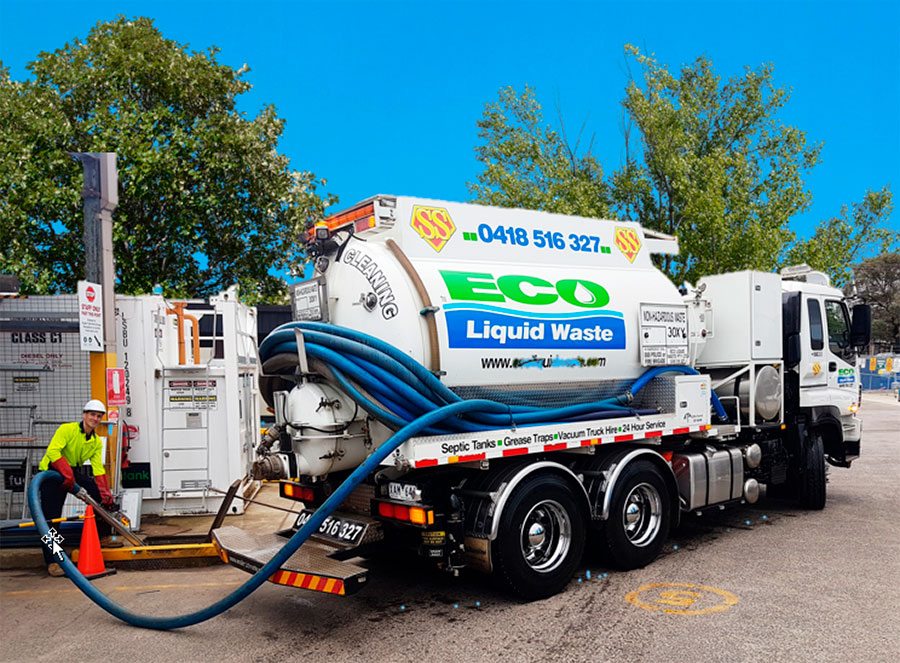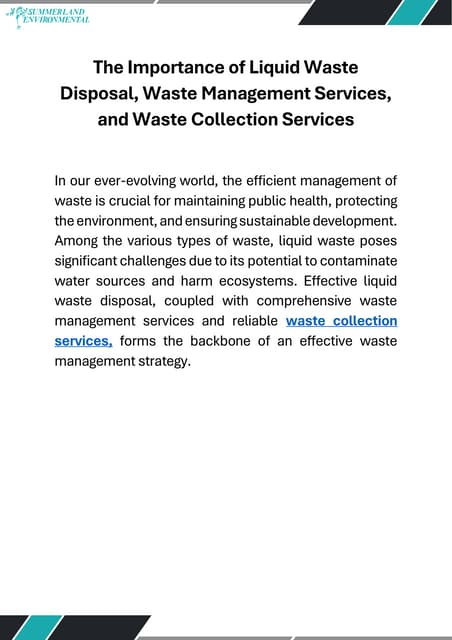Everything about Reclaim Waste
Everything about Reclaim Waste
Blog Article
Some Known Incorrect Statements About Reclaim Waste
Table of ContentsGetting My Reclaim Waste To WorkReclaim Waste - The FactsThe Ultimate Guide To Reclaim WasteA Biased View of Reclaim WasteThe Facts About Reclaim Waste Uncovered
Domestic sewage waste refers to the waste and items from a household septic tank. The appropriate monitoring and disposal of domestic sewer waste need fluid waste to be transferred to a sewage treatment plant where the appropriate techniques and tools are applied to purify and dispose of waste.
Industrial waste often includes prospective risks, such as flammable products or a combination of fluid and strong waste items, and calls for an advanced and detailed disposal process. The disposal of commercial waste typically entails the filtration of waste prior to transport to ensure safe and proper disposal. Industrial waste is created from byproducts and overflow of commercial procedures and production.
This kind of waste can not use the very same sewage administration transportation or procedures as septic or industrial liquids. The hazardous waste administration process needs the examination and screening of liquid waste before it goes through the disposal process (liquid waste removal melbourne). Runoff waste is the fluid waste that originates from overflow and excess stormwater in highly inhabited locations or cities
Drainage waste can create contamination and flooding if not managed appropriately. Find out more about sewer cleansing and waste management. Ensuring appropriate waste administration can protect against disasters and minimize ecological injury. Both individuals in household setups and professionals in commercial or manufacturing sectors can gain from recognizing the procedures and guidelines of liquid waste administration.
Reclaim Waste for Dummies
Get in touch with PROS Providers today to find out regarding our waste monitoring and disposal solutions and the proper methods to look after the liquid waste you produce.
(http://www.place123.net/place/reclaim-waste-laverton-north-vic-australia)Do you understand what happens to your water when you end, purge the bathroom or drain the cleaning equipment? No? Well, it's worth knowing. This so-called 'wastewater' is not just an essential source but, after therapy, will certainly be launched to our land, rivers or the sea. Made use of water from commodes, showers, baths, kitchen sinks, laundries and commercial processes is understood as wastewater.

water used to cool equipment or clean plant and equipment). Stormwater, a kind of wastewater, is overflow that moves from farming and city areas such as roofings, parks, yards, roadways, courses and seamless gutters right into stormwater drains pipes, after rain. Stormwater flows without treatment straight to neighborhood creeks or rivers, eventually getting to the ocean.
The Definitive Guide to Reclaim Waste
In Queensland, the majority of wastewater is treated at sewer treatment plants. Wastewater is transferred from residential or industrial sites through a system of sewers and pump terminals, referred to as sewage reticulation, to a sewer treatment plant. Local federal governments build, keep and operate most sewage therapy plants. Operators are licensed under the Environmental Defense Act 1994 to discharge treated wastewater at an appropriate ecological requirement right into waterways.
The Department of Natural Resources encourages local governments concerning managing, operating and preserving sewerage systems and treatment plants. In unsewered locations, city governments may need householders to set up individual click here now or family sewer treatment systems to treat domestic wastewater from bathrooms, kitchen areas, washrooms and laundries. The Department of Natural Resources authorizes the use of family systems when they are verified to be reliable.
In some brand-new class, treatment of some stormwater to eliminate litter, sand and gravel has started utilizing gross toxin catches. Wastewater treatment happens in four stages: Removes strong matter.
Uses tiny living organisms recognizes as micro-organisms to break down and get rid of remaining dissolved wastes and great fragments. Micro-organisms and wastes are integrated in the sludge.
Little Known Questions About Reclaim Waste.
Nutrient elimination is not offered in all sewer therapy plants due to the fact that it requires costly specialized devices. It is coming to be extra usual in Queensland. Clear liquid effluent created after therapy may still consist of disease-causing micro-organisms. If this effluent is released into rivers such as rivers or the sea, the micro-organisms will ultimately pass away out.

This generally suggests wastewater needs to be dealt with or pollutants removed prior to it can be released to waterways. Many wastewater moves into the sewage system. Under the Act, city governments administer authorizations and licences for eco pertinent activities (Periods) involving wastewater launches that might have a neighborhood impact. The division carries out authorizations and licences to Periods involving wastewater launches that could have a regional or statewide effect.
The Of Reclaim Waste
Otherwise, examples are considered research laboratory evaluation. Usually many tests are required to establish the degrees of each of the various contaminants such as oils, hefty metals and pesticides in water. Tracking offers factual details concerning water high quality and can confirm that licence conditions are being met. The info acquired with tracking supplies the basis for making water high quality decisions.
Report this page